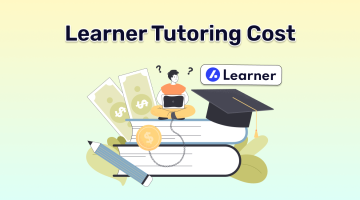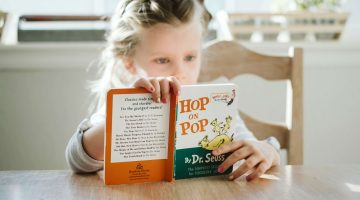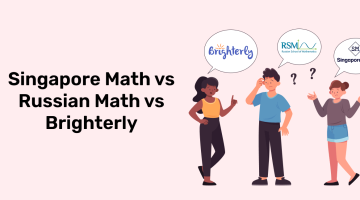How to Teach Kids to Read: 11 Best Strategies for All Literacy Levels
reviewed by Marvi M. Andres
Updated on September 16, 2025
Your kid grows up, and the question of how to teach kids to read sooner or later crosses your mind. Reading is the basic skill, and it’s important to make their start smooth and enjoyable so they don’t abandon books later on. This guide will make their love for reading possible!
Key points on what are the correct steps of teaching a child to read:
- At an early age, there is no need to push kids into reading. The strategy you choose should feel like a fun game
- Finding a reading tutor and/or reading to your kid aloud are the most effective methods for teaching preschoolers to read.
- Aim at combining reading with visuals, like using flashcards, colorful books, or turning on subtitles while they watch their favorite cartoons.
- Tongue twisters, like rhymes and games, are great for making more “serious” letter-sound correspondence and sight word methods fun.
When should I start teaching my child to read?
Ideally, you should start teaching your child to read once they show interest in books. To make it possible, two things must happen:
- It’s important to show your kid love for reading from birth by reading to them aloud, singing, and being around them with books.
- You shouldn’t push your kid into reading, as there is no universal timeline when parents should teach their kids to read.
Once your kid starts playing with letters and words or tells you stories, you can be sure: they are ready for learning to read.
What are the basics of teaching reading?
The basics for teaching reading are ensuring that students reach the so-called 5 R’s of reading, or 1) readiness, 2) recognition, 3) repetition, 4) range, and 5) reflection.
What are the 5 R’s of reading?
- Readiness (phonemic awareness): Understanding the letters and their sounds
- Recognition (phonics): Realizing the relationship between letters in words
- Repetition (fluency): Accuracy and speed of reading words
- Range (vocabulary): Depth of understanding the words read
- Reflection (comprehension): Depth of understanding the story described with words
In the early stages of teaching reading, educators focus on developing phonemic awareness and phonics recognition.
Top 11 teaching reading strategies
- Teaching reading with a reading tutor
- Word games as a teaching reading method
- Learning letter-sound correspondence
- Teaching reading via phonemic approach
- Teaching with sight words
- ‘Letter of the Week’ teaching game
- Flashcards as a teaching method
- Teach reading with TV subtitles
- Shared reading teaching method
- Use of visual aids in teaching reading
- Teaching reading as group activity
#1 Teaching reading with a reading tutor
Best for: kids of all levels and interests

Reading tutoring is the top method for teaching reading because it works for very different kids. During 1:1 personalized sessions, reading tutors adjust their approach to the particular needs of each kid. This way, they receive the necessary set of skills in a fun and enjoyable way, no matter what their current literacy proficiency level is.
What is the best program to teach a child to read?
The best reading program for kids should teach kids phonemic awareness through targeted instruction yet make the teaching process fun so that kids fall in love with reading.
Methods of teaching reading at Brighterly
Brighterly reading tutoring platform is among the most effective learning programs that combine an individualized approach, an award-winning structure, and a proven methodology. In addition to personalized 1:1 tutoring sessions, you can browse through a comprehensive set of free tools that help kids reinforce their reading skills, including working on reading worksheets (coming soon!) and practicing diagnostic tests.
Best practices for teaching reading from Brighterly tutors
In addition to reading tutoring that teaches phonics knowledge, Brighterly has designed a complete reading program for grades 1–9. The program is based on the Common Core standards to make kids more confident in their reading skills and improve their school grades.
Note: On a free lesson, a reading tutor determines your kid’s reading level to offer the program adapted to their grade, current level, and learning goals.
#2 How to teach a kid to read with word games
Best for: kids who can play games non-stop
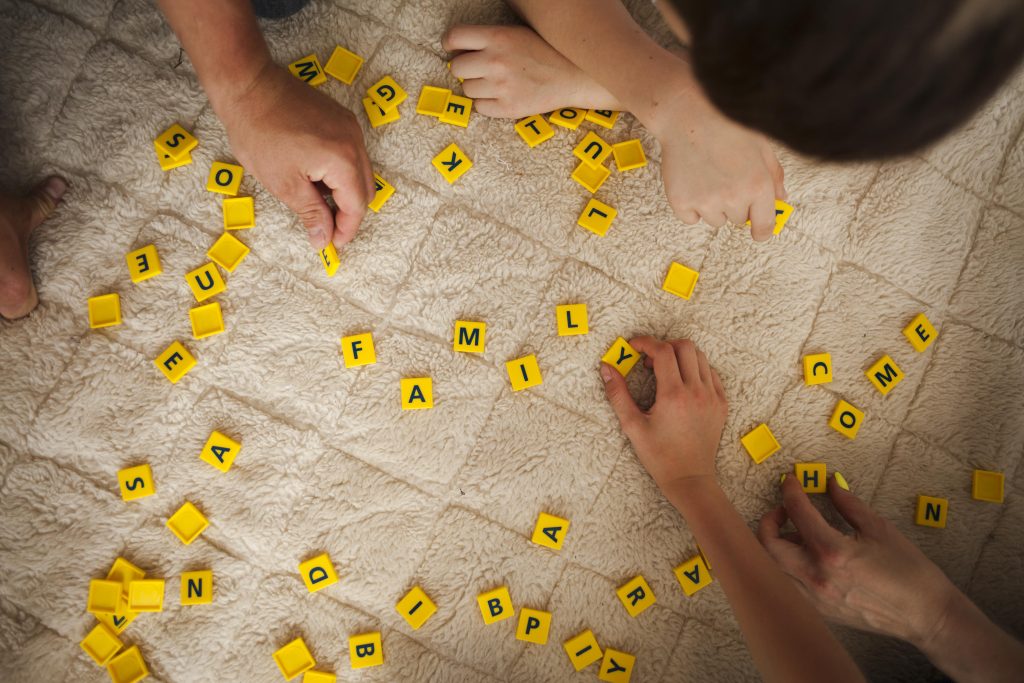
Why games can be the best way to teach reading?
The best trait of word games is their ability to build a strong association between reading and fun. For starters, you can use online games like “Sound Bingo” or “Word Builders” or create your own games, like tracing letters around you or in nursery settings.
#3 How to teach a child to read via letter-sound correspondence exercises
Best for: total reading beginners
Ways to teach reading via letter-sound correspondence
You can make letter-sound correspondence your teaching reading method in various ways:
- Concentrate on a specific letter and find words that reinforce its comprehension and knowledge
- Open a book and find random words to practice letters
- Use an alphabet book and help them learn letter by letter
Learning the alphabet and the letter sounds is the first step into teaching reading. No matter which way you choose, be patient — it’s better to make practices short and interactive to keep kids engaged and help them learn the complex skill step by step.
Note: To make your lessons more fun, try using this method while you write in the air or read aloud.
#4 How to teach my child to read via phonemic approach
Best for: children who enjoy understanding the smallest details of big things
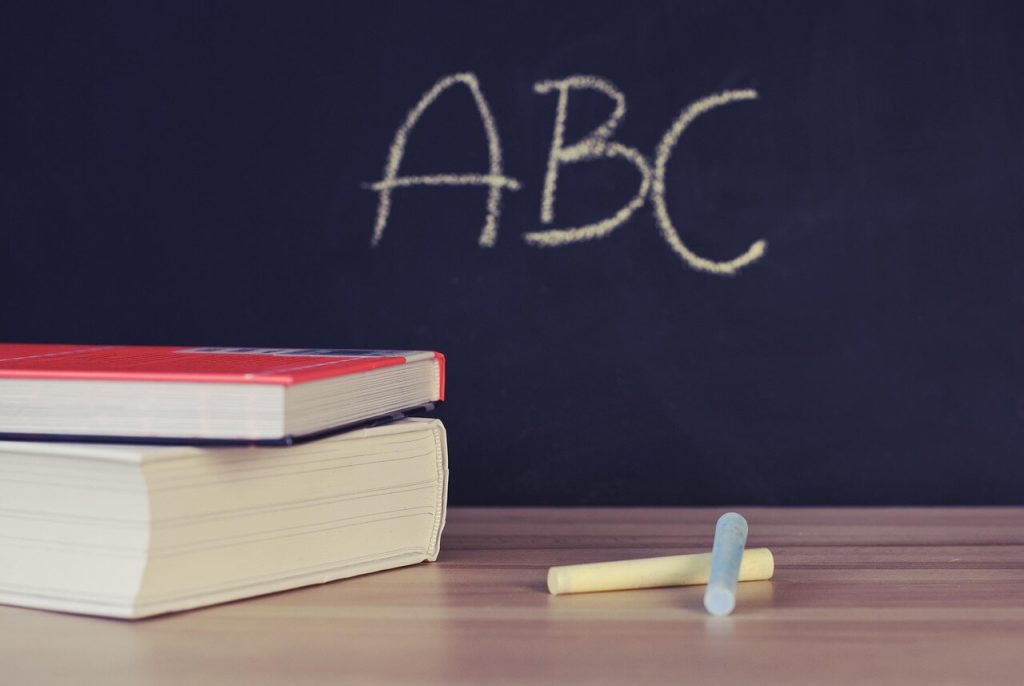
Best teaching reading strategies for the smallest units of sounds
To practice phonemic awareness, it’s important to get your kid a set of exercises that are based on sound isolation, blending, segmentation, and manipulation. Then, dedicate 15 minutes daily to teach them these sounds in a playful and progressive manner, not to overwhelm them but to ensure the maximum effectiveness of practices.
Note: Try adding rhymes as they stick in kids’ mind and facilitate understanding of how the single sound in a word can affect its meaning (like “cat”/”bat” or “mouse”/“house”).
#5 Teaching kids to read with sight words
Best for: early readers who already recognize some words but cannot read fluently
Working strategies for teaching reading via sight words comprehension
The best strategies to teach sight words are to learn them through repetition or as a game. Not to make practice of memorizing sight words overwhelming yet effective, aim at a balanced approach that mixes learning them with games and easy rhymes.
Sight words are frequently appearing short words in texts. The ability to recognize and pass them increases the speed of reading and makes teaching phonological awareness systematic.
Note: If your kid likes this approach, get free separate sight words worksheets from Brighterly (coming soon!) to reinforce their knowledge.
#6 How to teach your child to read via ‘Letter of the Week’ game
Best for: young children who need a slow-paced teaching approach
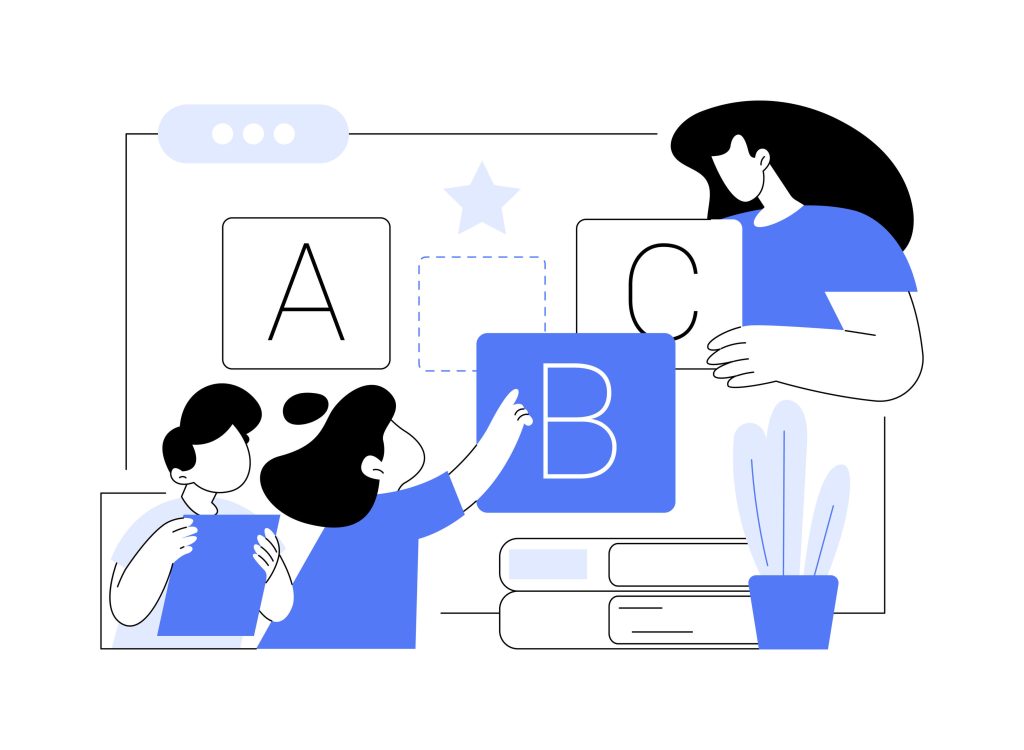
Steps to teaching reading via ‘Letter of the Week’ game
- You choose one letter that you aim to practice the whole week
- Build all your games, exercises, and other teaching reading activities around tracing and memorizing this letter in different contexts
- Move to another letter next week
However, you can make this game more interactive by practicing a couple of letters for a week (instead of one) or adding some interesting contexts into learning (like writing letters on the sand or dancing them). This way, you can accelerate the teaching pace and introduce a multisensory approach into learning.
Note: Practice uppercase and lowercase letters separately and then combine them by the end of the week.
#7 Teaching children to read with flashcards
Best for: kids who love playing cards and visual aids

How do you teach reading with flashcards?
Teaching reading with flashcards can work as consistent practice, a positive reinforcement game, or a reading speed test, depending on your kid’s level, interests, and personality.
By using flashcards, you help kids build strong associations between letters, words, and objects they represent. Once done systematically and regularly, they are among the most sustainable approaches to teaching reading, ensuring active recall and spaced repetition necessary for consistent letter comprehension.
If your kid enjoys playing cards, the flashcard method can work perfectly for them to learn how to read. Although they involve systematic drilling of letters, they don’t feel like studying, which is highly beneficial for kids who lack studying discipline.
#8 Teaching to read via TV subtitles
Best for: children who don’t want to learn but can watch TV all day long instead
How to teach someone to read with TV subtitles?
Teaching reading with TV subtitles works by just turning them on. This can be both a lazy and a strategic method of teaching reading, depending on the context and the readiness of your kid to study while watching their favorite cartoons.
The main benefit of this teaching reading method is dual processing, meaning that kids hear the words in an entertaining context and see them in a written form simultaneously. This way, even if you just turn on subtitles for your kid and they consume them passively, this move can improve vocabulary and listening comprehension. But once used strategically as a teaching method, the same subtitles can make a huge difference in actually understanding and memorizing new words.
Note: “Turn on the Subtitles” (TOTS) is the grassroots campaign in Tennessee advocating for this simple switch that boosts childhood literacy.
#9 Teaching kids how to read via shared reading method
Best for: parents who want to participate in teaching reading fully
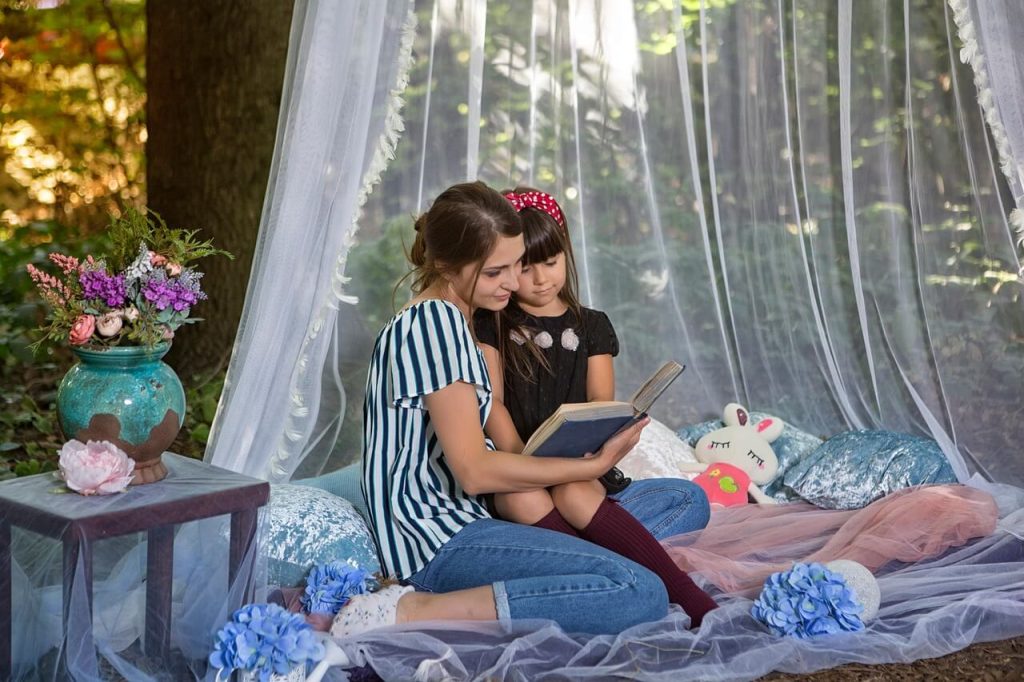
Teaching students to read by reading to them
Beyond being an act of support and care, shared reading is an effective method in helping your kids make the first steps in reading and grow confidence and love for reading this way.
If you want to use this method, make sure your teaching practice involves these things:
- Interesting story (you can use one of your kid’s favorite stories)
- Interactive participation (let them lead the reading practice with your support)
- Concentrate on the specific thing you want to practice (for example, phonics, vocabulary, or comprehension)
- Reread the sentence several times (to ensure understanding)
Note: To keep kids engaged and make sure they’re following what you’re doing, ask them follow-up questions about the things you’ve read together a couple of hours after the practice.
#10 Teaching reading using visual aids
Best for: kids who need images or videos to learn
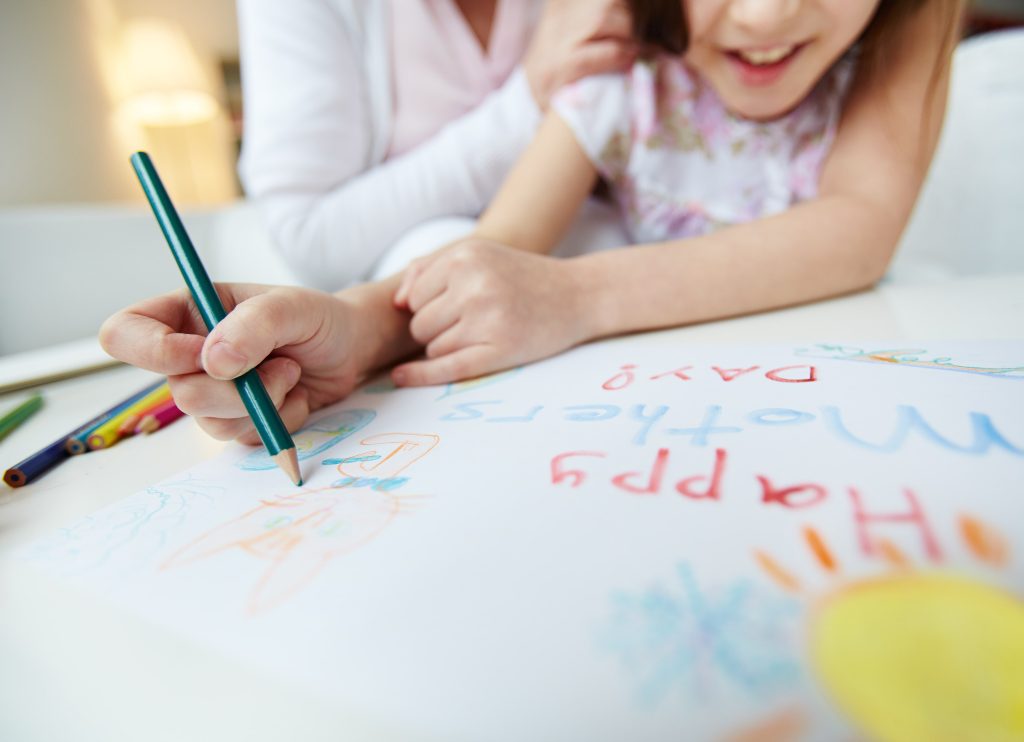
How to teach reading with visuals?
- Buy big colorful books
- Use color pencils and paints to draw letters
- Involve graphic organizers
- Pair images or videos with words you say
- Find educational videos on YouTube to keep kids engaged
#11 Teaching reading in groups
Best for: children who spend all their time with friends
How to teach reading to kids in groups?
Establish regular paired reading or reading in small group sessions as a teaching reading method that also helps kids socialize. The trick here is to choose the text everyone involved will enjoy, so be ready to offer kids several options they can choose from.
To ensure the session is effective, provide kids with clear instructions and aim to practice a specific reading strategy with them within 15-20 minutes. Once one kid in a pair or group gets stuck, be ready to offer them targeted support that doesn’t cause them stress or pressure.
Note: To make the reading practice more effective, choose the text that is slightly above the reading level of the best reader in the pair or group. This way, everyone will find something new to learn.
How to teach reading to preschoolers?
Preschoolers are taught reading to build pre-literacy skills, meaning basic phonemic awareness with a fun and engaging introduction to letters and sounds. Thus, if you’re wondering how to teach reading for beginners, use strategies like the ‘Letter of the Week’ game or reading them their favorite fairy tales from big, colorful books.
What is the best way to teach reading in kindergarten?
For kindergarten kids, the best reading techniques and strategies include building phonics recognition on top of phonemic awareness within a systematic and balanced approach. The exact methods can include watching TV with subtitles, flashcards, and word games. The key is to help kids get the meaning of the words they read fast and easily.
What skill is most important for a student just learning to read?
While making the first steps into reading, the most important skill to develop is phonemic awareness, or the automatic letter-sound correspondence. To make this skill engaging and fun, most teachers use songs, visual aids, and flashcards. If you’re still figuring out how to teach reading to kids, hire a reading tutor to help you choose the correct method for your kid.
How to teach reading skills to elementary students?
For elementary students, teaching reading steadily transforms from a “learning to read” to a “reading to learn” approach. To make it possible, reading tutors involve more complex strategies aimed at increasing fluency, enlarging vocabulary, and enhancing overall reading comprehension. Since grade 3, it’s expected for kids to be fully ready for independent reading that involves advanced comprehension strategies and vocabulary sophistication.
What is the best way to teach reading? Conclusion
There are several methods to teach reading to kids, and the most appropriate one depends on your kid’s literacy level, learning style, and the effort you are ready to dedicate to helping them learn how to read. Generally, teaching reading is a sequential process based on mastering the 5 R’s of reading step by step.
What are the steps to teach reading?
- Building a phonemic awareness background through sound isolation and manipulation.
- Enhancing letter-sound multisensory correspondence, or the ability to recognize letters and their sounds
- Recognizing simplest letter connections in sight words
- Growing fluency through repeated reading
- Expanding vocabulary through new texts and contexts
- Building comprehension through asking questions about the meaning of the stories read
- Encouraging independent reading, meaning “reading to learn”
This systematic progression guarantees the new skills are built on a solid foundation. Given the growing complexity and effort needed, it’s really important to make reading feel easy and fun at the first reading steps. For this, feel free to use interactive methods to teach reading and combine more “serious” approaches with games and playful tongue twisters.
Given that studying with reading tutors is among the best ways to teach reading, it’s worth considering this strategy seriously and making a first step today!
If you’re ready, just book free reading lesson from Brighterly. After the test session, you will get the reading practice tailored to your kid’s needs and can continue working with a Brighterly tutor for an affordable price.





